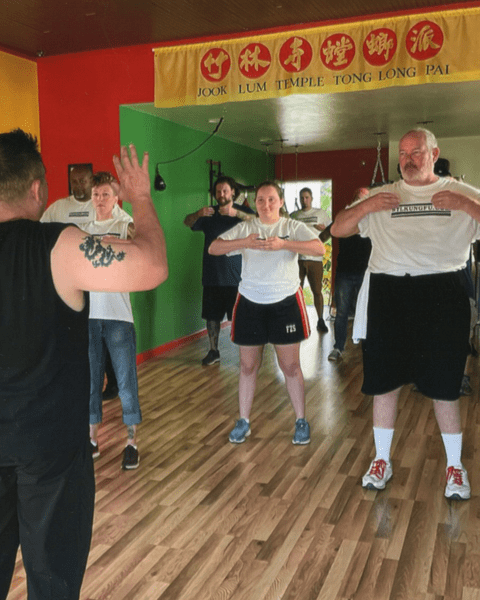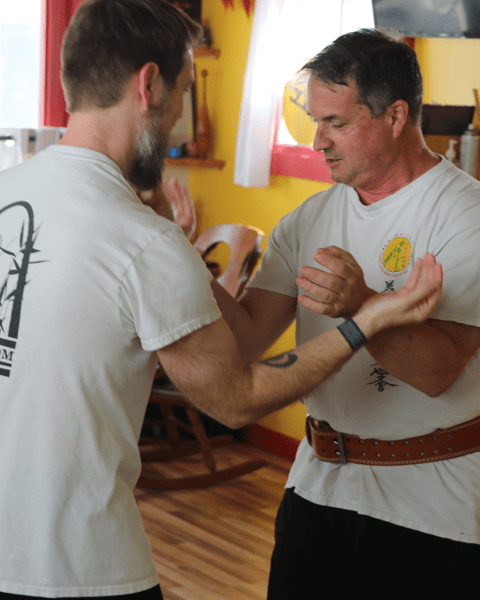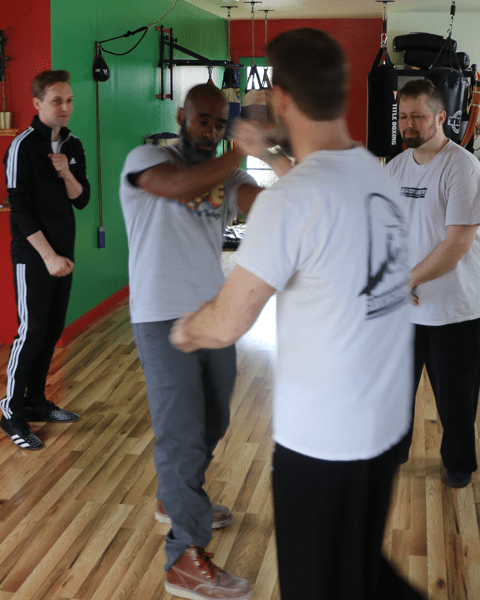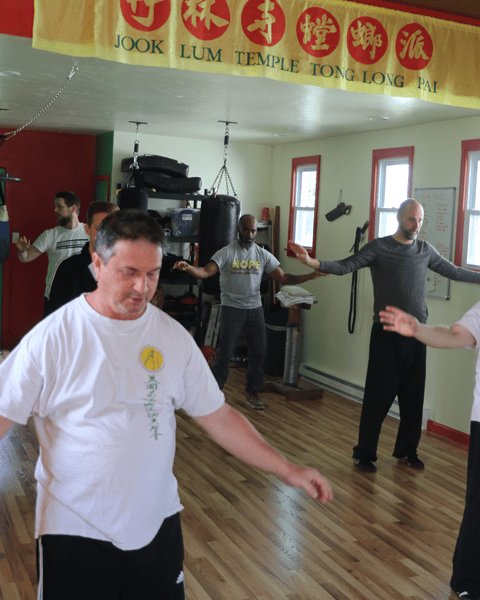Training Curriculum
Dedicated students should expect to spend up to three years learning this system, and many more mastering it. Your pace will depend on how well you understand the system mechanics and how often you practice.
Students advance in three stages. First you must grasp the fundamentals. I don’t care what martial art or sport you practice, those who excel master the basics. To build a temple, you must start with a solid foundation.
There are different partner exercises at each level to supplement the individual drills and exercises.
Each level includes a contact hard and soft contact drill, a mor qui (controlling drill), and drills that help you harness the energy or motion you’ll learn in individual forms and exercises.
Southern Praying Mantis self-defense system

Beginners: Building structure
The mantis body structure is difficult to take on, and that’s where every new student starts. We’ll go through drills and exercises that develop the physical mechanics of our system.
We call the first year of training Southern Praying Mantis bodybuilding. It develops the unique body and hand shapes for this kung fu. The arms stay in front of the body, elbows inside the hands.
We keep our arms tight against the body for protection and leverage. You push, pull and punch by turning the body rather than extending the arms and exposing yourself to counterattack. This compact, fast and powerful structure allows for a defensive offense. We rarely open ourselves up for a devastating blow, even when we’re delivering one.
The first forms teach you to transition between basic stances. The main form in this level, Som Bo Phon Non Choi, (three-step phoenix eye fist), develops strength and endurance.
Chi gong breathing exercises are a part of every level of our kung fu. They’re necessary to maintain a strong and healthy body. We call these the old man exercises since they’re great for a tight back. But they’re also crucial to combine your movement, breath, and intention.

Intermediate: Building power and mobility
Once you get the body structure, we start to show you how to float, sink and sting.
Our fighting philosophy is simple: Don’t block and don’t go backward. We cover, move in and redirect the opponent’s energy for our own attack.
We manipulate and control (borrow) an opponent’s force through circular motion training, which we call floating or “the tornado force.” This requires you to be relaxed and feel your opponent’s movements, ready to react when the moment is right. That’s where the chi gong breathing exercises come in.
The main form in this level is Som Bo Gin, (three-step arrow). We also practice combining six methods of producing power with eight ways to borrow and harness force.
Students advance through practice. Give yourself six to 12 months for each level. At times, the instructor will introduce more advanced kung fu to gauge how well the student processes the new information.

Advanced: Application
At the advanced level, we begin to apply the principles and techniques of the system.
Here is where it all comes together into a complete fighting system.
Students move forward in this level based on how well they move and produce power as well as their ability to apply the system in two-person drills.
You’ll master the three advanced punches. Straight punch, double hi/lo punch, and shaking punch.
There are many advanced “dut jongs” or two-man drills. This is where you learn how to flow seamlessly from power to mobility and change direction more quickly.
Weapons training is not our main focus, but it’s fun to train and helps bring the kung fu to your hands. Advanced students can learn the staff, butterfly knives, broadsword, and iron ruler.

